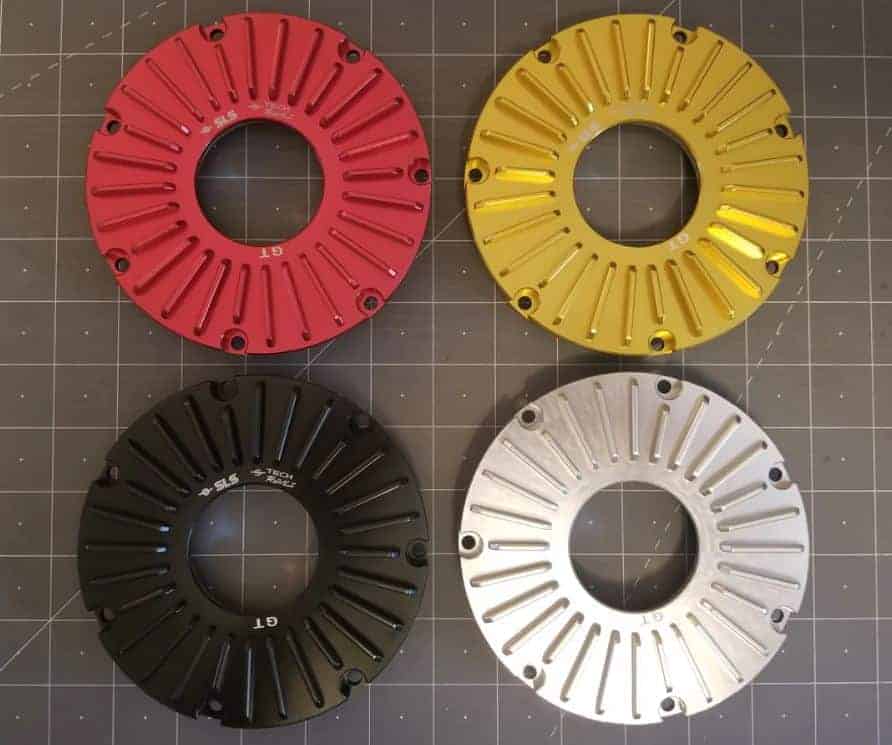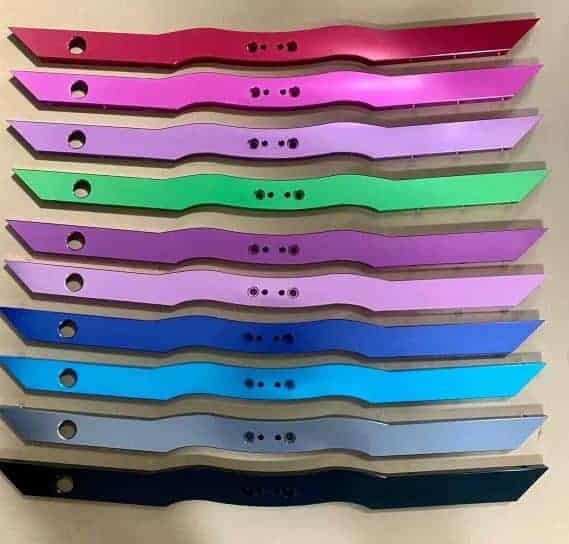One thing to consider that gets asked often is the weight limit to a Onewheel. The weight limits should be known whether you are looking at the V1, XR, Plus, Pint models or the GT. Knowing the weight limit of your Onewheel of choice can help ensure optimal safety and maximum range. The Onewheel weight limit for each model can range from 250 lbs to 275 lbs depending on the size and style of board.
Onewheel V1, Plus, XR, GT & GT S-Series models have a recommended weight limit of 275lbs (125kg) whereas the Pint Models (Pint, Pint X) have a recommended weight limit of 250lbs (113kg).
Onewheel Weight Limit Explained
Like any powered vehicle, the payload (weight onboard) has to be transported by the motor. Keep in mind that advertised range is based on a 200 lb rider (91kg). All Onewheels have a 750 watt Hypercore hub electric motor that is responsible in getting the rider (payload) from point A to B. The same as a traditional gas-powered motor, it requires more fuel to move more weight. Same thing goes for e-skateboards, EUCs and Onewheels. Future Motion does tend to underestimate the limits of their products however with weight, its generally sage advice to adhere to it.
Besides a loss in range, higher weight is more taxing on the motor which makes it more prone for overheating. From a standstill, it takes a good deal of power to start to get the rider to move. As momentum is built up, less power (creating less heat) is needed to keep and maintain speed. Rough terrain in most off-road situations similarly puts more stress on the motor making it more susceptible for overheating. While all Onewheels have potential for overheating, the majority of the complaints have been with the GT.
Onewheel’s Weight Limit Compared to Skateboards
While the weight limit capacity of the Onewheel ranges from 250 to 275lbs, the weight limit to a traditional skateboard is relatively similar. True, there is no official weight limit for a standard board however a standard skateboard about 30″ long safely can hold about 275 lbs. Longboards are a little more around 300lbs whereas a Penny board would fall under both of them at about 200 lbs. Each other skateboard holds a higher degree of concern due to the polyurethane wheels and the weight on the board.
It is far easier for a heavier rider to ride over obstacles with a larger tire like on a Onewheel opposed to the smaller diameter tires of a traditional four wheel board. Its also quite the contrary to many people’s believe on Onewheels in that they can actually overcome far more bumpier, chunkier terrain. For this reason, heavier riders tend to be safer riding a large pneumatic tire than hard plastic. Find what e-skateboard works best for you.
That being said however, the weight limit should be adhered to. The one wheel is essentially an electric skateboard and the motor has limitations. Especially where one wheel riders take their boards. Riders often are trail riding. The rougher terrain is more added stress. Rough terrain coupled with a heavy payload equals potential accident or disaster.
Onewheel’s Weight Limit Compared to Hoverboards
Hoverboards come in a variety of styles and are made by several manufacturers. Its important to know the differences between the hoverboard and Onewheel. Generally, the Onewheel is a well polished off-roading PEV whereas the hoverboard is more of a recreational child’s toy. Typical weight limit of a hoverboard is 225 lbs for hoverboards with wheels of 6 to 8 inch diameter whereas the larger wheels can handle about 300 lbs.
While the are relatively similar in weight, because of the large go-kart tire the Onewheel is far more secure on bumpy and uneven terrain. For the same reason, EUCs tend to do better than Onewheels on off-road terrain.
Onewheel GT’s Overheating Issues
Onewheel GT is the most problematic board when it comes to overheating. Typically this is only experienced by riders that are over 200 lbs or heavier on trails on warmer days. The problem is that the GT rails are painted. Prior Onewheel models (Onewheel XR, Plus, Pint) were bare aluminum which had perfect contact with the hub. The Onewheel is designed so that the rails act as heatsinks. A heatsink is basically something for absorbing excessive or unwanted heat.

The hub emits a notable amount of heat and with the nature of how the motor is enclosed within the hub. It needs a solid contact with the rails to dissipate the heat. The issue is that Onewheel GT has painted rails. The paint behaves like an insulator and does not allow for much of the heat to be properly dispersed along the rails creating a heat trap.
My GT Overheated. What do I do?
You may hear a long beep from the GT or a notification within the app letting you know that the board overheated. Most riders find that there is an issue when attempting to re-mount the GT. The motor will not engage. Hopefully you’re not riding it when that happens! You need to turn the board off and wait 10 to 20 minutes for the motor to cool. There is nothing that ruins a group ride than a board that’s out of commission.
Solution #1 – Finned motor covers

Tech rails has developed a motor cover that has fins to “fan the heat” allowing for a better motor cooling. This is a CNC, billet aluminum motor cover for the Onewheel that has integral fins machined in and is anodized rather than powder-coated so that the cooling doesn’t get inhibited by paint.
Unrelated to cooling, they also offer titanium hardware that really makes your GT stand out.
Solution #2 – Sand off the stock paint or purchase aftermarket rails

Taking the rails off and sanding off some of the paint is not incredibly difficult if you use powered hand sander. If you don’t want to damage the stock rails, you can always swap them for aftermarket rails that are not painted but anodized. Anodizing is an electrochemical process that changes the color of the metal without adding layers of paint. This restores the rails to an ideal heat sink instead of a heat trap!
The Mob Shoppe offers mustache and lightning rails to not only help with better heat dissipation, but also to help by offering a better ride comfort.
Future Motion does not provide the operating temps of the motor so the overheating temperature limit is unknown. It is known enough however by the several riders online expressing their annoyance with this when riding trails. Again, this may be something heavier riders will incur more frequently. If you are experiencing this problem, you need to address the heatsink issue of the GT. Adding some coolant like ferrofluid within the hub could also provide some cooling, but rails and a motor cover are what I recommend.
Exceeding the Weight Limit of the Onewheel
Future Motion is giving recommended weight limits. Can a 300 lb rider operate a Onewheel? The answer is yes however any battery regeneration or rough terrain will likely overheat the motor. It is important to not exceed the recommended weight.

I am constantly trying to lose more weight to gain more added range from my boards. Lighter riders are far less tolling on the motor which just results in epic range. If you want some amazing range, there’s no way around the issue. The way to achieve this is by dropping weight.
Is Riding a Onewheel Good Exercise?
Riding a Onewheel is considered to be a mild to moderate excercise workout depending on the terrain and intensity. While riding on trails, you can expect your heartrate to elevate moderately however it will not increase to the levels of jogging, cycling or running. Before my time trail riding Onewheels, I was an active runner. A typical week for me would be to run about 5 miles. Since trail riding is far more exhilarating, a good deal of my fitness time goes into one wheeling. A 10 mile trail ride however is significantly more mild than a 5 mile neighborhood jog.
Onewheel riding is good for those who want to slowly get active. Its not a sport that has your heartrate exploding however it will engage several muscle groups. Onewheel riding does incorporate feet, arms and hands and everything in between however the major muscle groups being engaged are the quads, calves and obliques. The intensity increases with a more bent-knee / carving style of riding. While the fitness is not as intense as I sometimes would like it to be, I will exaggerate my carves on trails to target the obliques and leg muscles.
Even with a non-stop 10 mile trail ride, you may experience foot fatigue or cramping prior to really feeling soreness in your other muscle groups. In time, you will pass this. The riding will never be as intense as a run however the concession is you can float to your destination while enjoying the life around you on your way by. Something even as casual as Outdoor Kayaking will have limits. Its still feasible to do these activities however The experience is going to differ.
F.A.Q.’s
Yes, it is possible to inject ferrofluid into the motor assembly area. You inject it between the hub and motor. https://www.youtube.com/watch?v=SCR74sBi884 demonstrates how.
While the ambient temperature plays into the overheating of the Onewheel, more-so than the outside temperature is how hot the motor is running while riding. Ambient temperatures play an indirect role in the overheating concerns yet they do impact the board. If you experience overheating, you likely will not experience overheating if temperatures are cooler however the main issue is the temp within the motor (how hard are is the motor working).
Indirectly, if the bearings are notably worn out, the motor is trying harder to transport the rider. Worn bearings do have an indirect impact on motor temperature.
The Onewheel XR and GT have a max weight recommendation of 275lbs whereas the Evolve e-skateboards are 220lbs and 250lbs for a Boosted Board. Generally speaking, the Onewheel can carry more weight that most e-skateboards.
No. Rails such as the WTF’s or any other for that matter, do not help with increasing the weight limit.

2 thoughts on “Onewheel Weight Limit: V1, Plus, XR, Pint, Pint X, GT, GT S-Series”